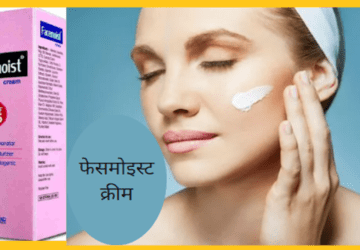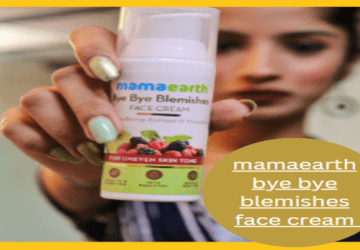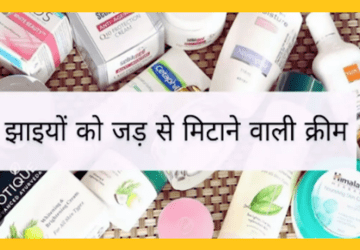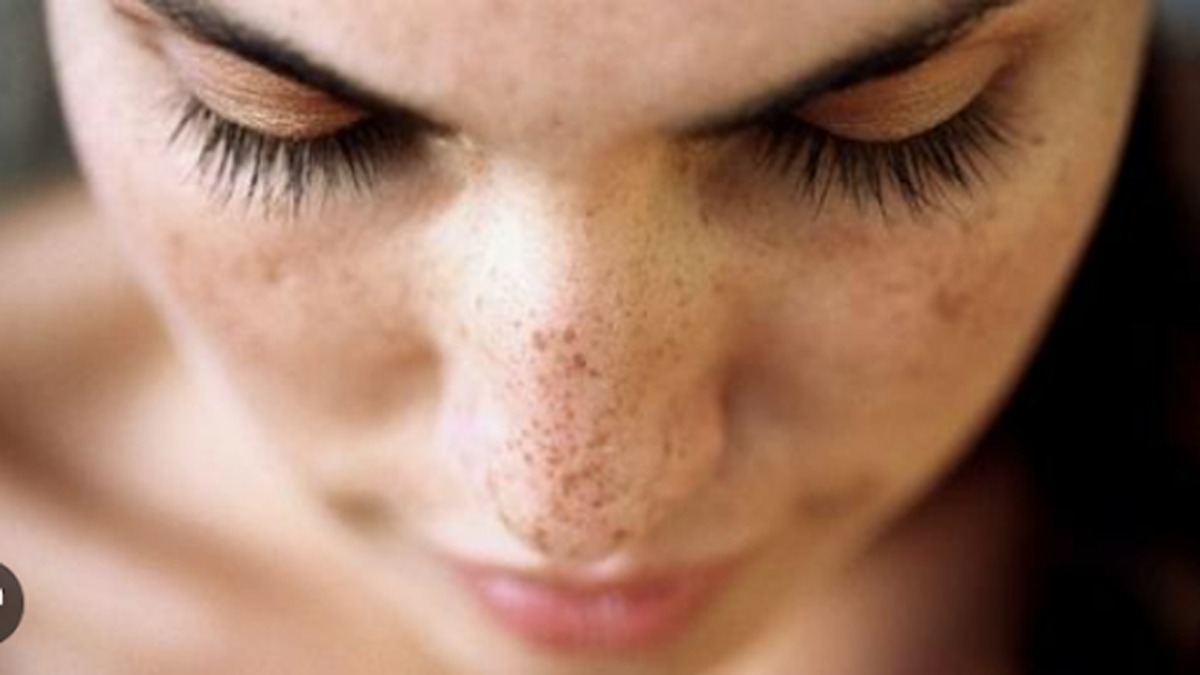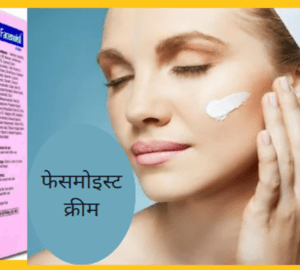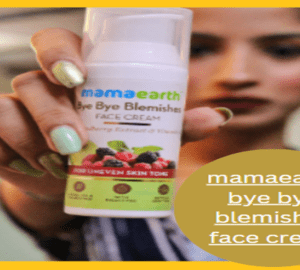Pigmentation, also known as hyperpigmentation, is a common skin concern for many people. Those dark spots, uneven patches, and areas of discoloration can make you feel self-conscious, but it’s important to understand what causes and the various treatment options available. With the right knowledge and products, you can reduce the appearance of pigmentation and feel confident in your skin! Know in detail what is pigmentation?
What is Pigmentation?
Pigmentation refers to darker spots or patches that develop on the skin of the face. It occurs when there is an excess production of melanin, the pigment that gives skin its color. The areas of darker pigmentation are called hyperpigmentation.
Some common types of pigmentation include:
- Freckles – Light brown, flat spots
- Age/Sun Spots – Dark spots from sun exposure
- Melasma – Patchy pigmentation often due to hormones
- Post-Inflammatory – Dark spots left after acne, rashes, etc.
Pigmentation can occur in people of all skin tones but is more common and noticeable on lighter skin. Certain areas like the cheeks, forehead, upper lip, and around the eyes are most susceptible.
Defining Pigmentation vs. Hyperpigmentation
What’s the difference between pigmentation and hyperpigmentation?
- Pigmentation is an overall term referring to any areas of darker pigment on the face.
- Hyperpigmentation refers specifically to excessive or abnormal pigment production that leads to darkened patches on the skin.
So in short, hyperpigmentation is a type of pigmentation, caused by higher-than-normal melanin concentrations in certain areas.
Common Causes of Pigmentation
There are several potential causes and triggers for hyperpigmentation on the face:
- Sun exposure – UV rays stimulate melanin production
- Hormonal changes – Fluctuations during pregnancy or with birth control
- Inflammation – Acne, eczema, and psoriasis can all cause post-inflammatory hyperpigmentation
- Aging – Liver spots develop as we get older
- Genetics – Those with darker complexions are more prone to pigmentation
- Chemicals – Hydroquinone and retinoids may initially cause increased pigmentation
Knowing the root cause can help you better treat and prevent further pigmentation.
Types of Pigmentation Marks on the Face
Various types of hyperpigmentation can appear on the face:
- Freckles: Light tan, flat specks, often genetic
- Melasma: Blotchy patches on cheeks, forehead, upper lip and chin
- Age spots: Round, dark spots from sun exposure
- Post-inflammatory: Leftover marks from past acne, rashes, cuts, etc.
- Acne marks: Red or dark marks left by pimples as they heal
- Scar pigmentation: Darker patches within a scar itself
The type of pigmentation helps determine the best treatment approach.
Signs and Symptoms of Pigmentation
How do you know you have pigmentation? Look for these common signs:
- Darker patches or spots on the face, especially cheeks, lips, forehead, and around the eyes
- Freckle-like specks that are flat, light brown, and scattered across the nose and cheeks
- Blotchy, grayish-brown patches on the central face that are symmetrical on both sides
- Well-defined dark spots with clear edges that appear on cheeks and temples
- Red or brown marks left behind after a pimple, cut, or rash has healed
- Darker patches within an old scar
If you notice any new spots, marks or patches on your face that are a different shade from your normal skin tone, it likely indicates some degree of hyperpigmentation. Seek treatment to prevent it from worsening over time.
How to Prevent and Reduce Pigmentation
While most pigmentation requires professional treatments for complete removal, there are things you can do at home to prevent and reduce dark spots:
- Wear sunscreen daily – UV protection minimizes sun damage leading to spots
- Use skin-lightening products – Ingredients like vitamin C, retinoids, and niacinamide fade pigmentation
- Exfoliate regularly – Removing dead skin cells helps lighten pigmented areas faster
- Avoid skin irritants – Things like harsh scrubs and chemical peels can worsen pigmentation
- Protect skin after procedures – Shield skin from the sun after treatments to avoid post-inflammatory hyperpigmentation
With diligent skincare and sun protection, you can help stabilize pigmentation and support fading treatments.
Professional Treatments for Pigmentation
For moderate to severe hyperpigmentation, professional in-office treatments are required to eliminate pigmented spots and patches. Common options include:
Chemical Peels
Chemical peels exfoliate the top layers of skin to reveal fresher skin underneath. Medium-depth peels work well for pigmentation.
Laser Resurfacing
Lasers remove damaged outer skin layers. Ablative lasers work best on pigmentation by stimulating new collagen production.
Intense Pulsed Light (IPL)
IPL devices use focused light to target melanin and reduce excess pigment. A series of treatments is usually required.
Microdermabrasion
This minimally invasive treatment uses crystals to gently “sand” away pigmented skin cells, combining exfoliation with suction.
Topical Prescription Creams
Medications like hydroquinone, azelaic acid, tretinoin, and kojic acid can be prescribed to lighten pigmented areas over time.
Be sure to choose an experienced dermatologist or cosmetic surgeon when undergoing professional pigmentation treatments for optimal results and safety.
DIY Remedies to Fade Pigmentation on Face
If you have minor pigmentation and want to try fading it at home before considering professional treatment, here are some DIY remedies:
- Lemon juice – The citric acid bleaches pigment. Apply fresh juice on spots, rinse after 10 mins.
- Yogurt – Lactic acid gently exfoliates and fades pigment. Apply plain yogurt to pigmented areas for 15-20 minutes.
- Apple cider vinegar – contains acetic acid to break up the pigment. Dip a cotton pad in vinegar, dab on spots, and rinse after 15 mins.
- Aloe vera – Soothes inflammation and lightens skin. Apply gel liberally on pigmented areas.
- Turmeric – Curcumin has skin-lightening abilities. Mix turmeric powder with milk or honey. Apply to face for 20 minutes.
- Papaya – Papain enzyme gently exfoliates and brightens skin. Mash ripe papaya pulp and apply to spots for 10-15 mins.
Be very gentle with natural bleaching treatments and stop if you experience any irritation. Consistency is key for the gradual fading of pigmented areas on the face.
##Top Skin Lightening Products for Pigmentation in India
Here are some excellent skin-lightening products available in India for fading dark spots and pigmentation on the face:
- Kumkumadi Brightening Ayurvedic Face Serum – Contains saffron and natural botanicals to brighten skin.
- Minimalist 10% Vitamin C Face Serum – Pure L-ascorbic acid fades pigmentation with daily use.
- Dot & Key Pigmentation Control Serum – Niacinamide and vitamin C treat discoloration.
- DermaCo 20% Vitamin C Face Serum – High potency vitamin C with hydrating hyaluronic acid.
- Plum Green Tea Pore Cleansing Face Wash – Green tea gently fades dark spots and marks.
- Mamaearth Bye Bye Blemishes Cream – Mulberry fades acne spots while aloe soothes skin.
- Wow, Skin Science Saffron Face Cream – Rich saffron-infused moisturizer improves skin tone.
- Lakme Absolute Perfect Radiance Skin Lightening Serum – Lightens complexion while smoothing and brightening.
Coping with Pigmentation and Embracing Your Skin
Living with pigmentation can be frustrating, but try not to let it negatively impact your self-confidence. Some tips:
- Use makeup like color correctors and concealers to minimize the appearance of pigmented spots. A makeup artist can show you the best application techniques.
- If you have melasma, wear a broad-spectrum sunscreen daily as UV exposure makes it worse.
- Know that pigmentation is very common and doesn’t make you any less beautiful. We all have skin imperfections!
- Try adding bright accessories or clothing near your face to draw attention away from pigmented areas.
- See a dermatologist to discuss whether prescription bleaching creams or procedures could help your pigmentation.
- Don’t obsess over pigmented spots. Hyperfocusing draws attention.
Your skin doesn’t define you! Seek treatment if pigmentation bothers you, but don’t forget to embrace your unique beauty.
FAQs
Hyperpigmentation refers to areas of excess pigment and darker spots. Hypopigmentation means a lack of pigment, causing lighter patches on the skin.
With consistent treatment like laser resurfacing and prescription skin lighteners, pigmentation can be permanently eliminated in most cases. However, avoiding sun exposure and skin irritants is key to preventing new pigmentation from developing.
With diligent sun protection and professional treatments, sun-related pigmentation like age spots and melasma can be permanently removed. However, the skin will only be prone to new pigmentation with consistent sunscreen use.
For moderate to severe pigmentation, non-invasive laser treatments like fractional CO2 laser resurfacing provide excellent elimination of pigmented spots. Chemical peels and prescription bleaching creams also work well as part of an ongoing regimen.
See a dermatologist if OTC treatments haven’t improved pigmentation after a few months. Suddenly developing numerous dark spots or patches on the face also warrants medical evaluation to determine the cause.
Not necessarily. While sun damage and inflammation can cause excess pigment, even people with very healthy skin can develop pigmented spots and melasma, especially with hormonal shifts. Don’t assume all pigmentation is due to poor skin care.
There is some genetic predisposition to pigmentation. However, you can reduce your child’s risk by having them wear sunscreen diligently from an early age and avoiding skin irritants. Teaching them good skincare habits early on gives them the best chance of maintaining clear, even skin tone.
In Conclusion
Pigmentation and dark spots on the face can feel frustrating to deal with. But knowledge is power, so understand what causes your pigmentation, explore professional treatment options, and practice self-care. Consistent skincare, sunscreen, and avoiding irritation will help stabilize and prevent further pigment development. And remember, your skin doesn’t define your beauty!
Popular Search Term:
Best Body Wash In India | Vitamin C Serum benefits | How to Remove Tan | सबसे अच्छा बॉडी वॉश | मामाअर्थ टी ट्री फेस वॉश | Rice Water for Skin | अच्छा बॉडी वॉश कौन सा | स्किन केयर प्रोडक्ट | नीम फेस वॉश मुंहासों के लिए | mamaearth ubtan face wash | mamaearth aloe vera gel | mamaearth vitamin c face serum | mamaearth tea tree face wash | mamaearth vitamin c face wash | mamaearth charcoal face wash | mamaearth remove dark circle | mamaearth multani mitti | mamaearth face mask | mamaearth rice water | mamaearth ubtan face mask | mamaearth oil free moisturiser | mamaearth skin toner |
